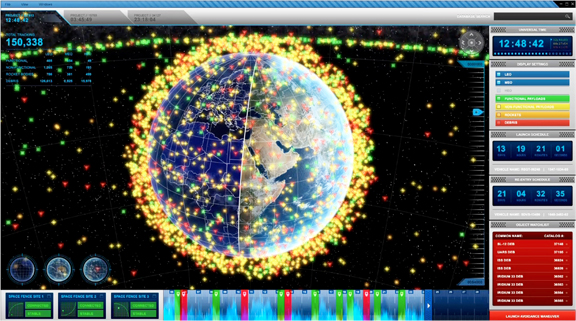...orbiting space objects, bringing the U.S. Air Force’s Space Fence program one step closer to revolutionizing our nation’s space situational awareness. Using powerful, new ground-based radars, Space Fence will enhance the way the U.S. detects, tracks, measures and catalogs orbiting objects and space debris with improved accuracy, better timeliness and increased surveillance coverage. Lockheed Martin’s prototype radar recently met a key contract requirement during a series of demonstration events by proving it could detect these resident space objects, as they are referred to by the Air Force. On February 29th, the Air Force granted its final approval of Lockheed Martin’s preliminary design for the system.
“The successful detection and tracking of resident space objects are important steps in demonstrating technology maturity, cost certainty and low program risk,” said Steve Bruce, vice president of the Space Fence program at Lockheed Martin’s Mission Systems & Sensors business. “Our final system design incorporates a scalable, solid-state S-band radar, with a higher wavelength frequency capable of detecting much smaller objects than the Air Force’s current system.”
Space Fence will enable the decommissioning of the aging U.S.-based Air Force Space Surveillance System (AFSSS), originally installed in 1961. With more than 60 nations operating in space today, the final frontier is much more complex than when the AFSSS first started tracking a few hundred orbiting objects. Today, with hundreds of thousands of objects orbiting the earth, space debris and risk of potential collisions now threaten national space assets providing critical services, including the Global Positioning System, banking and telecommunications.
Bruce added, “Space Fence will detect, track and catalog over 200,000 orbiting objects and help transform space situational awareness from being reactive to predictive. The Air Force will have more time to anticipate events potentially impacting space assets and missions. Our net-centric design approach allows Space Fence to be easily integrated into the broader U.S. Space Surveillance Network of sensors already operated by the Air Force.”
Lockheed Martin’s Space Fence prototype was developed under an 18-month, $107 million contract awarded by the Air Force in January 2011. The Air Force has said it plans to award a Space Fence production contract later in 2012. The first of several Space Fence sites is expected to reach initial operational capability in 2017. With more than 400 operational S-band arrays deployed worldwide, Lockheed Martin is a leader in S-band radar development, production, operation and sustainment. The Lockheed Martin-led team—which includes General Dynamics, AMEC and AT&T—has decades of collective experience in space-related programs, including sensors, mission processing, cataloging, orbital mechanics, net-centric communications and facilities.



